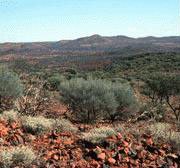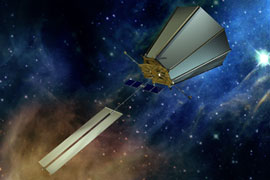
In order to understand the nature of the earliest surface environments on Earth, geological durable materials that retain chemical information bearing on surface conditions are required. In the apparent absence of a rock record from before ca. 4 billion years ago, the only direct means to investigate the Hadean Earth is through detrital zircons, which are resistant to chemical alteration and whose ages are known by in situ ion microprobe U-Th-Pb radiometric dating.
Although zircons form predominately in melts of broadly granitoid compositions, oxygen isotopes can be used to evaluate whether the source magma is enriched in heavy oxygen, a sensitive proxy for contamination by anatectic sediments. Zircons derived exclusively from partial melting of relatively unevolved igneous protoliths would have oxygen isotope ratios similar to that of bulk Earth ( 18O/ 16O referenced VSMOW; expressed as δ 18O = +5.3 ± 0.3‰). Some core regions of 4.37-3.8 Ga zircons from quartz pebble conglomerate in the Jack Hills of Western Australia are significantly enriched in 18O, with values as high as +10.0 ‰. Empirically-derived whole-rock (WR) oxygen isotope fractionation values indicate that the precursor magma of a +10‰ zircon would have had δ 18O WR = +12.0 ‰. This result has been taken as strong evidence for crust interacting with large volumes of (stable) surface water subsequent to zircon crystallization ca. 4.3 Ga. Although water was present, could the Hadean Earth have been habitable?
Post main-accretion impact fluxes of comets and asteroids would potentially have had direct influence on, and deleterious consequences for, an emerging biosphere. Lunar meteorite melts and melt-sheet ages for the Moon are contemporaneous with the canonical late heavy bombardment (LHB) epoch up to 3.92-4.0 Ga. Our ultra-high spatial resolution (sub-µm) U-Th-Pb ion microprobe depth profile studies of four ~4.1 Ga zircons record common (3.97-3.94 Ga) metamorphic zircon overgrowth ages with Pb loss; these metamorphic overgrowths are in excellent agreement within error for models of the timing of peak mass flux of the inner solar system linked with the LHB. Whether these rim overgrowths are of impact origin or due to more mundane metamorphic processes in the crust awaits further investigation.
 Simulating Groundwater Radiolysis With Oxidation of Pyrite by Hydrogen Peroxide Solution
Simulating Groundwater Radiolysis With Oxidation of Pyrite by Hydrogen Peroxide Solution Exploring Planet-Forming and Debris Disks
Exploring Planet-Forming and Debris Disks Quantifying Water Production in Comets - The "Meter Stick" for Their Chemical Taxonomy
Quantifying Water Production in Comets - The "Meter Stick" for Their Chemical Taxonomy Remote Sensing of Life and Habitable Worlds: Habstars, Earthshine, and the Challenge of TPF
Remote Sensing of Life and Habitable Worlds: Habstars, Earthshine, and the Challenge of TPF